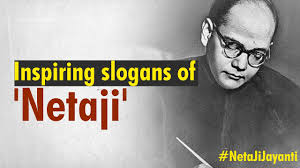
FASCINATING FACTS ABOUT THE NATIONAL FLAG OF INDIA
Tiranga, the National Flag of India, a revered symbol of the nation's identity and pride, was officially adopted on July 22, 1947, during a meeting of the Constituent Assembly. The Flag Code of India, 2002, which governs the usage of the national flag, came into effect on January 26, 2002.
1. Designed by Pingali Venkayya
The National Flag of India was designed by Pingali Venkayya, an Indian freedom fighter from Andhra Pradesh, known for his contributions to the independence movement.
2. Made from Khadi
Legally, the National Flag of India must be made from 'Khadi,' a hand-spun wool, cotton, or silk fabric. The Karnataka Khadi Gramodyoga Samyukta Sangha is the only unit in India authorized to manufacture and supply the Indian flag.

3. Manufacturing Rights
The Khadi Development and Village Industries Commission holds the exclusive rights to produce the National Flag of India, ensuring it meets all specifications.
4. Tiranga: The Three Colors and Asoka Chakra
Known as Tiranga in Hindi, the Indian flag consists of three colors and the Asoka Chakra in the center:
- Saffron: Symbolizes courage and sacrifice.
- White: Represents truth, peace, and purity.
- Green: Signifies prosperity.
-
Asoka Chakra: Represents the Laws of Dharma, depicted with 24 uniformly spaced spokes in navy blue on the white band.

5. Asoka Chakra Details
The Asoka Chakra symbolizes Dharma and is an integral part of the flag, although its size is not specified in the Flag Code. The Chakra has 24 spokes that are evenly spaced.
6. Dimensions
The width-to-length ratio of the Indian flag is 2:3. Each of the three horizontal stripes must be of equal width and length.
7. Official Adoption
The Indian flag was officially adopted on July 22, 1947, just before India's independence from British rule.
8. Mount Everest Conquest
On May 29, 1953, Sir Edmund Hillary and Sherpa Tenzing Norgay unfurled the Indian flag atop Mount Everest, alongside the flags of the United Kingdom and Nepal.

9. Largest Indian Flag
The largest Indian flag was hoisted at the Indo-Pak Attari Border. This massive flag measures 110 meters in length, 24 meters in width, and weighs 55 tons.
10. Space Flight
During the Indo-Soviet joint space mission in April 1984, the National Flag of India was carried into space on the spacesuit of Cosmonaut Wing Commander Rakesh Sharma.
These facts highlight the rich history and significance of the National Flag of India, reflecting the country's heritage and the contributions of countless freedom fighters like Bhagat Singh, as well as the valor of the Indian Army.
BUY TIRANGA STICKERS AND POSTERS HERE!
[The images used in this blog post are not owned by Anime Devta, they are just for entertainment purposes]
| BHAGAT SINGH | FREEDOM FIGHTERS | INDIAN ARMY | INDEPENDENCE MOVEMENT | TIRANGA |
~Mimansa Sharma

